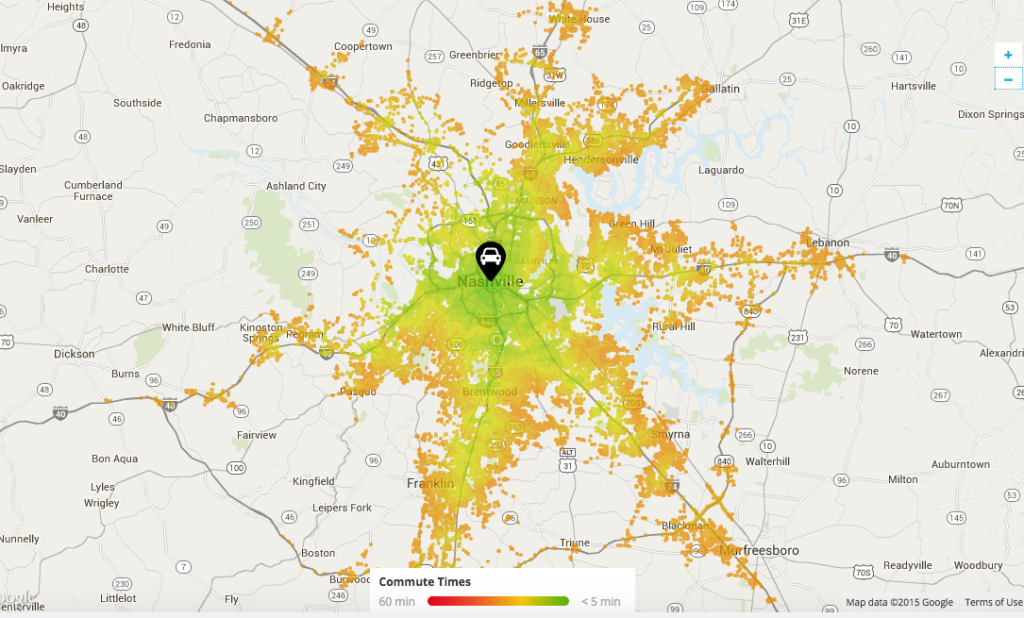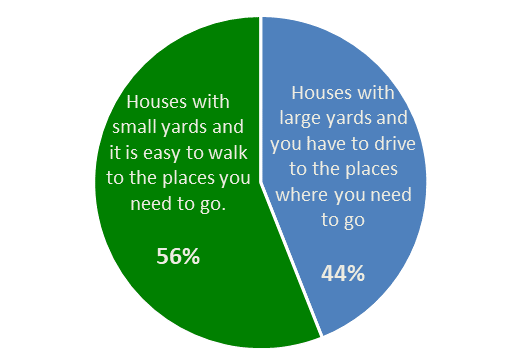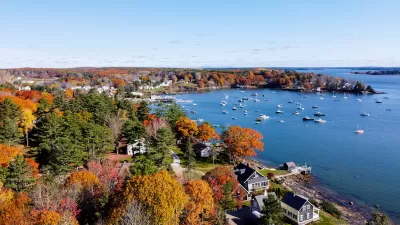Smart Growth creates compact, multimodal communities where residents consume less land, drive less, and rely more on non-auto modes. Planners have important stories to tell about the benefits of Smart Growth.

Home is where the heart is and community is where the home is. As a result, few issues affect people more deeply than our community’s development pattern, since this touches our hearts.
I just updated my report, Understanding Smart Growth Savings, which provides detailed information on the benefits and costs of different development patterns. I hope that advocates and critics will read this report so we can have more informed discussions about these issues.
Smart Growth policies, including upzoning and mixing land uses, eliminating parking minimums, and improving non-auto modes can provide large transportation cost savings, more independent mobility and economic opportunity for non-drivers, lower costs of providing public infrastructure, traffic safety, improved public fitness and health, local economic development, and improved environmental quality. These are particularly beneficial to physically, economically and socially disadvantaged groups.
The table below summarizes typical differences between the 20 PERCENT Smartest Growth and the 20 percent most sprawled areas, for example, between a central neighborhood with a Walk Score over 70 compared with a sprawled, automobile-dependent exurban area where residents must drive everywhere they go.
|
Benefit Category |
Typical Impacts |
|
Land conservation and open space preservation. |
Use 40-80% less land per capita for buildings, roads and parking facilities. |
|
Public infrastructure and service cost savings. |
Reduces costs of providing public infrastructure and services 10% to 30%. |
|
Reduced vehicle travel and increased non-auto travel. |
Residents drive 30-70% less and use non-auto modes 2-10 times more. |
|
Affordability and economic resilience. |
Reduces housing costs 10-40% and transport costs 10-60%. |
|
Accessibility and travel time savings. |
Improves accessibility and reduces time spent travelling to work and services 30-60%. |
|
Serve non-auto travel demands. |
Can provide non-drivers with accessibility comparable to suburban motorists. |
|
Traffic safety. |
Reduces traffic casualty rates 20% to 80%. |
|
Public fitness and health. |
Increases physical activity 20-50%, improves health outcomes and increases longevity. |
|
Energy conservation and emission reductions. |
Reduces energy consumption and pollution emissions 10% to 60%. |
|
Economic opportunity and long-term prosperity. |
Increases economic opportunity and long-term prosperity 10% to 30%. |
|
Community cohesion and integration. |
Significantly increases community cohesion, plus economic and social integration. |
|
Social problems (poverty, crime, mental illness, homelessness). |
Can reduce poverty, crime, mental illness and homelessness. |
|
Economic productivity and development. |
Increases productivity, employment, innovation, and tax revenues 10% to 30%. |
This table summaries typical Smart Growth benefits.
Let me highlight a few important but sometimes overlooked impacts.
Smart Growth significantly improves overall accessibility — that is, people’s ability to reach services and activities, which reduces their transportation costs and improves their economic opportunities, particularly for non-drivers. Non-drivers living in compact, multimodal neighborhoods usually have equal or better access to jobs and services than suburban motorists, at a fraction of the cost.
Commute durations are usually much lower in central urban neighborhoods (often less than 15 minutes), than in sprawled, urban-fringe areas (often over 30 minutes), as illustrated below. Central neighborhood residents also tend to spend less time and money traveling for other destinations such as schools, shops and parks. Departments of transportation are mistaken when they claim that urban highway expansions will provide travel time savings; by displacing high-accessibility central neighborhoods and encouraging sprawl, they actually increase the total time people spend traveling.
Nashville Region Commute Duration (Nesting Nashville)

In automobile-dependent areas, 5 percent to 15 percent of vehicle trips are for chauffeuring, which is inefficient because they often involve deadheading — empty vehicle-travel required to drop off and pick up passengers — so transporting a non-driver five miles generates ten vehicle-miles of travel. As a result, Smart Growth tends to benefit everybody, including motorists who enjoy reduced chauffeuring burdens, less congestion, and increased safety.
Residents of compact, multimodal neighborhoods are much more physically active and more likely to achieve physical activity targets, are less likely to be overweight, have lower crash risks, have better health outcomes, and live two to four years longer than people living in automobile-dependent areas.
Smart Growth areas tend to have higher average wages and salaries and better economic opportunities and long-term outcomes, particularly for lower-income families and adult non-drivers. Smart Growth policies that improve the public realm (sidewalks, local parks, and public transit facilities) and neighborhood services tend to increase community cohesion. Policies that increase diverse housing types in walkable neighborhoods tend to encourage economic and social integration, including people who are currently homeless due to mental illness and addiction.
Surveys, such as the National Association of Realtors' Community and Transportation Preferences Survey, indicate that most households would prefer to live in Smart Growth neighborhoods but many cannot due to inadequate supply.

Smart Growth may increase some costs, but these can be minimized. For example, compact development increases unit land prices (dollars per acre) but that can be offset by allowing higher densities that reduce unit land costs. Similarly, infill can increase local traffic problems but reducing trip generation tends to reduce regional traffic problems, particularly if implemented with TDM incentives.
This analysis indicates that Smart Growth often provides larger and more diverse benefits than conventional planning recognizes. More comprehensive analysis can justify more Smart Growth policy implementation. This suggests that to be efficient and equitable communities should ensure that anybody, particularly physically, economically, and socially disadvantaged groups, should be able to find suitable housing in compact, walkable Smart Growth neighborhoods.

Alabama: Trump Terminates Settlements for Black Communities Harmed By Raw Sewage
Trump deemed the landmark civil rights agreement “illegal DEI and environmental justice policy.”

Planetizen Federal Action Tracker
A weekly monitor of how Trump’s orders and actions are impacting planners and planning in America.

How Atlanta Built 7,000 Housing Units in 3 Years
The city’s comprehensive, neighborhood-focused housing strategy focuses on identifying properties and land that can be repurposed for housing and encouraging development in underserved neighborhoods.

In Both Crashes and Crime, Public Transportation is Far Safer than Driving
Contrary to popular assumptions, public transportation has far lower crash and crime rates than automobile travel. For safer communities, improve and encourage transit travel.

Report: Zoning Reforms Should Complement Nashville’s Ambitious Transit Plan
Without reform, restrictive zoning codes will limit the impact of the city’s planned transit expansion and could exclude some of the residents who depend on transit the most.

Judge Orders Release of Frozen IRA, IIJA Funding
The decision is a victory for environmental groups who charged that freezing funds for critical infrastructure and disaster response programs caused “real and irreparable harm” to communities.
Urban Design for Planners 1: Software Tools
This six-course series explores essential urban design concepts using open source software and equips planners with the tools they need to participate fully in the urban design process.
Planning for Universal Design
Learn the tools for implementing Universal Design in planning regulations.
Caltrans
Smith Gee Studio
Institute for Housing and Urban Development Studies (IHS)
City of Grandview
Harvard GSD Executive Education
Toledo-Lucas County Plan Commissions
Salt Lake City
NYU Wagner Graduate School of Public Service





























